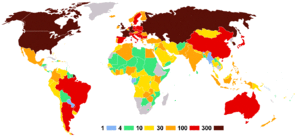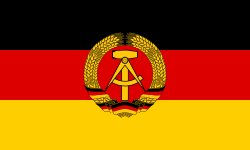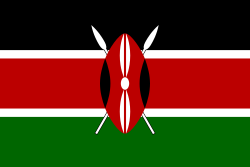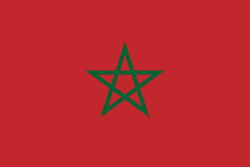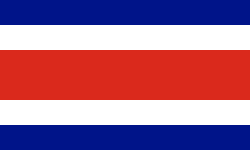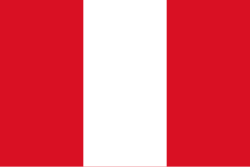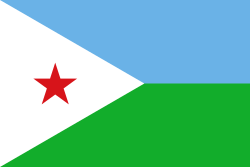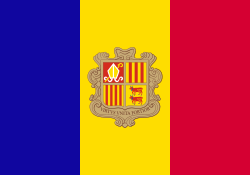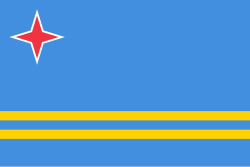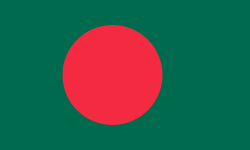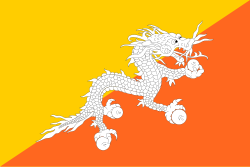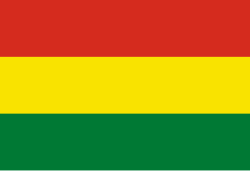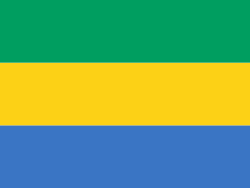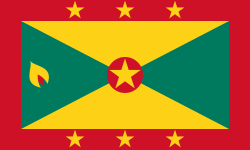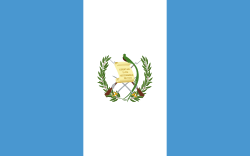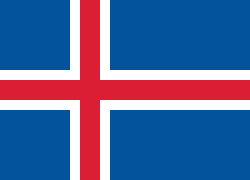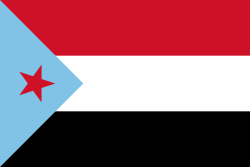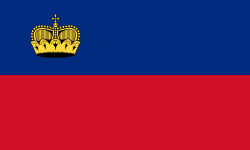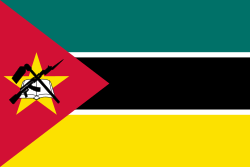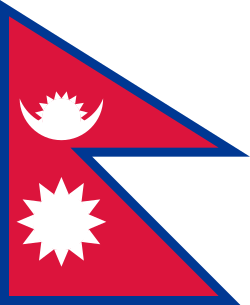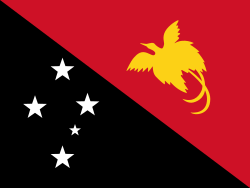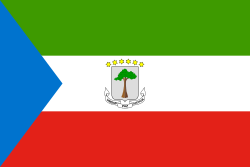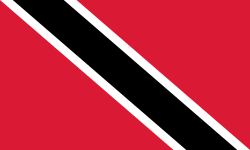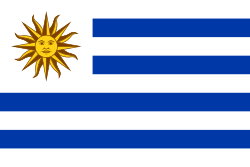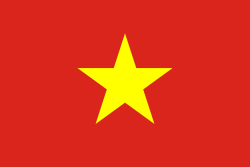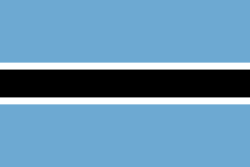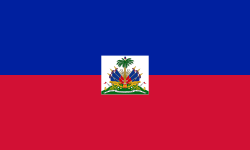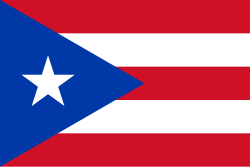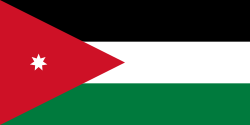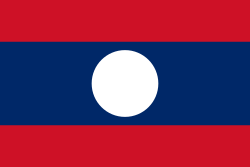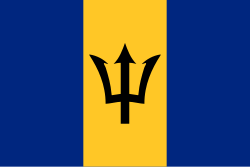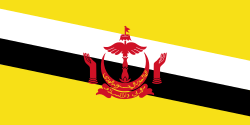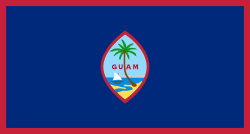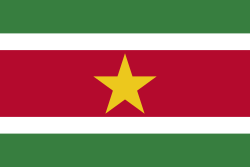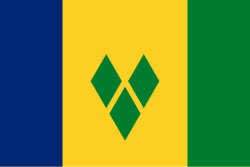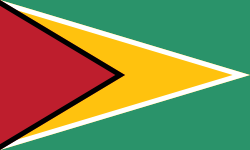Letní olympijské hry 1988
| XXIV. letní olympijské hry | |
|---|---|
| Místo konání | Soul, Jižní Korea |
| Počet zemí | 159 |
| Počet sportovců | 8465 |
| Soutěže | 263 |
| Zahájení | 17. září 1988 |
| Zakončení | 2. říjen 1988 |
| Slib za sportovce | Hur Jae |
| Slib za rozhodčí | Lee Hakrae |
| Pochodeň | společně Chung Sun-man Kim Won-tak Sohn Mi-chung představitelé vědy, umění a sportu |
| Stadion | Jamsil Olympic Stadium |
← LOH 1984 LOH 1992 → | |
XXIV. letní olympijské hry se uskutečnily v době od 17. září do 2. října 1988 v Soulu v Jižní Koreji. Zúčastnilo se jich 8465 sportovců (6279 mužů a 2186 žen) ze 159 zemí. Soutěžilo se v 263 disciplínách 27 sportů. Poprvé v historii byl do olympijského programu zařazen stolní tenis. Tenis se na soulských hrách objevil po 64 letech, když došlo ke zmírnění olympijských pravidel ohledně účasti profesionálů.[1] Tenisté však nedostali peníze ani body do žebříčku, proto se řada předních hráčů jako tehdejší světová jednička Mats Wilander turnaje nezúčastnila.
Centrem olympijského dění byl Seoul Sports Complex ve čtvrti Songpa s olympijským stadionem pro sedmdesát tisíc diváků. Maskotem her byl tygr Hodori, ústřední píseň „Hand in Hand“ složili Giorgio Moroder a Tom Whitlock.
Pořadatelské město bylo vybráno v roce 1981 a dostalo přednost před dalším zájemcem, japonskou Nagojou. Ani těmto hrám se nevyhnul bojkot (podobně jako v roce 1976, 1980 a 1984), své sportovce nevyslala Severní Korea, Kuba, Etiopie a Albánie.
Politické pozadí
Po bojkotu olympiády v Los Angeles vyvstaly obavy o osud her v Soulu: Jižní Korea byla dosud oficiálně ve válce se Severní Koreou a neudržovala diplomatické vztahy s komunistickými státy. Juan Antonio Samaranch dosáhl toho, že v listopadu 1984 byla v Ciudad de México přijata deklarace odmítající politicky motivované bojkoty her.[2] Sovětský svaz poté zrušil zákaz startu svých sportovců na jihokorejském území. V roce 1985 navrhla KLDR, aby oba korejské státy uspořádaly hry společně. Jihokorejci původně souhlasili a nabídli Pchjongjangu uspořádání části fotbalového turnaje a soutěže v lukostřelbě a stolním tenise. Severokorejci však toto symbolické gesto odmítli a požadovali pořadatelství poloviny všech soutěží, stejně jako společný organizační výbor a právo nazývat svoji část programu „Pchjongjangská olympiáda“. K dohodě proto nedošlo, když SSSR a Čína v rámci zlepšování vztahů se Západem neposkytli KLDR očekávanou podporu. Nakonec se zástupci severní části poloostrova her vůbec nezúčastnili.[3]
Sporty
Ukázkové sporty
- Badminton
- Baseball
- Bowling
- Taekwondo
- Závod na vozíčcích
- Ženské judo
Počet medailí podle údajů mezinárodního olympijského výboru
| Pořadí | Země | Zlato | Stříbro | Bronz | Celkem |
| 1 | 55 | 31 | 46 | 132 | |
| 2 | 37 | 35 | 30 | 102 | |
| 3 | 36 | 31 | 27 | 94 | |
| 4 | 12 | 10 | 11 | 33 | |
| 5 | 11 | 14 | 15 | 40 | |
| 6 | 11 | 6 | 6 | 23 | |
| 7 | 10 | 12 | 13 | 35 | |
| 8 | 7 | 11 | 6 | 24 | |
| 9 | 6 | 4 | 6 | 16 | |
| 10 | 6 | 4 | 4 | 14 | |
| 11 | 5 | 11 | 12 | 28 | |
| 12 | 5 | 10 | 9 | 24 | |
| 13 | 5 | 2 | 2 | 9 | |
| 14 | 4 | 3 | 7 | 14 | |
| 15 | 3 | 6 | 5 | 14 | |
| 16 | 3 | 4 | 5 | 12 | |
| 17 | 3 | 3 | 2 | 8 | |
| 18 | 3 | 2 | 8 | 13 | |
| 19 | 3 | 2 | 5 | 10 | |
| 20 | 2 | 5 | 9 | 16 | |
| 21 | 2 | 3 | 0 | 5 | |
| 22 | 2 | 2 | 5 | 9 | |
| 23 | 2 | 1 | 1 | 4 | |
| 24 | 1 | 2 | 3 | 6 | |
| 25 | 1 | 1 | 2 | 4 | |
| 25 | 1 | 1 | 2 | 4 | |
| 27 | 1 | 1 | 0 | 2 | |
| 28 | 1 | 0 | 2 | 3 | |
| 29 | 1 | 0 | 0 | 1 | |
| 29 | 1 | 0 | 0 | 1 | |
| 29 | 1 | 0 | 0 | 1 | |
| 32 | 0 | 4 | 7 | 11 | |
| 33 | 0 | 2 | 2 | 4 | |
| 34 | 0 | 2 | 0 | 2 | |
| 35 | 0 | 1 | 1 | 2 | |
| 36 | 0 | 1 | 0 | 1 | |
| 36 | 0 | 1 | 0 | 1 | |
| 36 | 0 | 1 | 0 | 1 | |
| 36 | 0 | 1 | 0 | 1 | |
| 36 | 0 | 1 | 0 | 1 | |
| 36 | 0 | 1 | 0 | 1 | |
| 36 | 0 | 1 | 0 | 1 | |
| 36 | 0 | 1 | 0 | 1 | |
| 44 | 0 | 0 | 2 | 2 | |
| 44 | 0 | 0 | 2 | 2 | |
| 46 | 0 | 0 | 1 | 1 | |
| 46 | 0 | 0 | 1 | 1 | |
| 46 | 0 | 0 | 1 | 1 | |
| 46 | 0 | 0 | 1 | 1 | |
| 46 | 0 | 0 | 1 | 1 | |
| 46 | 0 | 0 | 1 | 1 | |
| 46 | 0 | 0 | 1 | 1 | |
| Celkem | 241 | 234 | 264 | 739 | |
|---|---|---|---|---|---|
Účastnické země
Her se zúčastnili sportovci ze 159 zemí. Následující země se zúčastnily poprvé v historii: Aruba, Americká Samoa, Cookovy ostrovy, Guam, Jižní Jemen, Maledivy a Svatý Vincenc a Grenadiny. Naposledy se her zúčastnila Německá demokratická republika a Sovětský svaz.
Čísla v závorkách udávají počty sportovců zastupujících zemi.
- Účastnické země
- Počet sportovců zastupujících jednotlivé země
|
|
|
 Brunej se účastnil pouze obou slavnostních ceremoniálů a jeho delegaci tvořil pouze jeden rozhodčí.
Brunej se účastnil pouze obou slavnostních ceremoniálů a jeho delegaci tvořil pouze jeden rozhodčí.
Výrazné momenty
- Nejúspěšnějšími účastníky her byli plavci: Kristin Ottová (NDR) získala šest zlatých medailí, Matt Biondi (USA) pět zlatých, jednu stříbrnou a jednu bronzovou.
- V Soulu bylo překonáno 33 světových a 227 olympijských rekordů.[4]
- Olympijskou premiéru měl běh žen na 10 000 m a ženská dráhová cyklistika.
- Christa Ludingová se stala jediným sportovcem v historii, který získal ve stejném roce medaili na zimních i letních olympijských hrách: po rychlobruslařském prvenství v Calgary skončila na druhém místě v cyklistickém sprintu.[5]
- Ben Johnson vyhrál běh na 100 metrů ve světovém rekordu 9,79 s, ale vzápětí by diskvalifikován za užívání dopingu. Zakázané látky byly nalezeny také u dvou bulharských vzpěračů, načež se celé bulharské družstvo odhlásilo ze soutěží.
Československo na LOH 1988
Reference
- ↑ http://www.nytimes.com/1988/09/11/sports/the-seoul-olympics-tennis-competitors-pros-in-name-fact.html
- ↑ Archivovaná kopie. library.la84.org [online]. [cit. 2015-08-24]. Dostupné v archivu pořízeném dne 2016-08-26.
- ↑ https://www.wilsoncenter.org/publication/nkidp-e-dossier-no-3-sport-and-politics-the-korean-peninsula-north-korea-and-the-1988
- ↑ http://www.ceskatelevize.cz/porady/10172752106-olympijske-archivy-vypraveji/208382541580008-loh-soul-1988/
- ↑ http://www.olympic.org/news/christa-luding-rothenberger/178092
Externí odkazy
 Obrázky, zvuky či videa k tématu Letní olympijské hry 1988 na Wikimedia Commons
Obrázky, zvuky či videa k tématu Letní olympijské hry 1988 na Wikimedia Commons - www.olympic.cz
- (anglicky) Oficiální výsledky LOH 1988 na Olympedia[nedostupný zdroj]
Média použitá na této stránce
Olympic Rings without "rims" (gaps between the rings), As used, eg. in the logos of the 2008 and 2016 Olympics. The colour scheme applied here was specified in 2023 guidelines.
Olympic Rings without "rims" (gaps between the rings), As used, eg. in the logos of the 2008 and 2016 Olympics. The colour scheme applied here was specified in 2023 guidelines.
Flag of South Korea from 21 February 1984 to 15 October 1997, when the exact colors were specified into their shades.
Autor: Scroch, Licence: CC BY-SA 3.0
Flag of Bulgaria (1971-1990). Flag of Bulgaria with Bulgarian coat from 1971.
Autor: Scroch, Licence: CC BY-SA 3.0
Flag of Bulgaria (1971-1990). Flag of Bulgaria with Bulgarian coat from 1971.
Flag of Romania, (21 August 1965 - 22 December 1989/officialy 27 December 1989).

Construction sheet of the Flag of Romania as depicted in Decree nr. 972 from 5 November 1968.
- l = 2/3 × L
- C = 1/3 × L
- S = 2/5 × l
Flag of Romania, (21 August 1965 - 22 December 1989/officialy 27 December 1989).

Construction sheet of the Flag of Romania as depicted in Decree nr. 972 from 5 November 1968.
- l = 2/3 × L
- C = 1/3 × L
- S = 2/5 × l
Variant version of a flag of Japan, used between January 27, 1870 and August 13, 1999 (aspect ratio 7:10).
Flag of the Socialist Federal Republic of Yugoslavia (1946-1992).
The design (blazon) is defined in Article 4 of the Constitution for the Republic of Yugoslavia (1946). [1]
Flag of the Socialist Federal Republic of Yugoslavia (1946-1992).
The design (blazon) is defined in Article 4 of the Constitution for the Republic of Yugoslavia (1946). [1]
Vlajka České republiky. Podoba státní vlajky České republiky je definována zákonem České národní rady č. 3/1993 Sb., o státních symbolech České republiky, přijatým 17. prosince 1992 a který nabyl účinnosti 1. ledna 1993, kdy rozdělením České a Slovenské Federativní republiky vznikla samostatná Česká republika. Vlajka je popsána v § 4 takto: „Státní vlajka České republiky se skládá z horního pruhu bílého a dolního pruhu červeného, mezi něž je vsunut žerďový modrý klín do poloviny délky vlajky. Poměr šířky k její délce je 2 : 3.“
Vlajka České republiky. Podoba státní vlajky České republiky je definována zákonem České národní rady č. 3/1993 Sb., o státních symbolech České republiky, přijatým 17. prosince 1992 a který nabyl účinnosti 1. ledna 1993, kdy rozdělením České a Slovenské Federativní republiky vznikla samostatná Česká republika. Vlajka je popsána v § 4 takto: „Státní vlajka České republiky se skládá z horního pruhu bílého a dolního pruhu červeného, mezi něž je vsunut žerďový modrý klín do poloviny délky vlajky. Poměr šířky k její délce je 2 : 3.“
The flag of Brazil from 1968 to 1992 with 23 stars.
Finská vlajka
Flag of Jamaica. “The sunshine, the land is green, and the people are strong and bold” is the symbolism of the colours of the flag. GOLD represents the natural wealth and beauty of sunlight; GREEN represents hope and agricultural resources; BLACK represents the strength and creativity of the people. The original symbolism, however, was "Hardships there are, but the land is green, and the sun shineth", where BLACK represented the hardships being faced.
Při zobrazení tohoto souboru lze snadno přidat orámování
bendera Indonesia
Flag of Iran. The tricolor flag was introduced in 1906, but after the Islamic Revolution of 1979 the Arabic words 'Allahu akbar' ('God is great'), written in the Kufic script of the Qur'an and repeated 22 times, were added to the red and green strips where they border the white central strip and in the middle is the emblem of Iran (which is a stylized Persian alphabet of the Arabic word Allah ("God")).
The official ISIRI standard (translation at FotW) gives two slightly different methods of construction for the flag: a compass-and-straightedge construction used for File:Flag of Iran (official).svg, and a "simplified" construction sheet with rational numbers used for this file.
Flag of Senegal
The civil ensign and flag of Belgium. It is identical to Image:Flag of Belgium.svg except that it has a 2:3 ratio, instead of 13:15.
The national flag of Kingdom of Thailand; there are total of 3 colours:
- Red represents the blood spilt to protect Thailand’s independence and often more simply described as representing the nation.
- White represents the religion of Buddhism, the predominant religion of the nation
- Blue represents the monarchy of the nation, which is recognised as the centre of Thai hearts.
Vlajka Angoly
The flag of Aruba
| Flag of Bolivia* | |
|---|---|
| country | Template:I18n/Republic of Bolivia |
| used by | Bolivia |
| from | 1851 |
| until | Present |
| created by | Government of Bolivia |
| format | 15:22 |
| shape | rectangular |
| colours | červená, žlutá, zelená
flag has 3 horizontal stripes |
| other characteristics | A horizontal tricolor of red, yellow and green. |
The flag of the Dominican Republic has a centered white cross that extends to the edges. This emblem is similar to the flag design and shows a bible, a cross of gold and 6 Dominican flags. There are branches of olive and palm around the shield and above on the ribbon is the motto "Dios,Patria!, Libertad" ("God, Country, Freedom") and to amiable freedom. The blue is said to stand for liberty, red for the fire and blood of the independence struggle and the white cross symbolized that God has not forgotten his people. "Republica Dominicana". The Dominican flag was designed by Juan Pablo Duarte, father of the national Independence of Dominican Republic. The first dominican flag was sewn by a young lady named Concepción Bona, who lived across the street of El Baluarte, monument where the patriots gathered to fight for the independence, the night of February 27th, 1844. Concepción Bona was helped by her first cousin María de Jesús Pina.
Flag of the Iraqi Republic, used officially in different forms from 1963-2008.
Zelený pruh má znázorňovat většinové katolické obyvatelsto Irska, oranžový pruh reprezentuje protestantskou menšinu a bílý pruh uprostřed znázorňuje mír a harmonii mezi nimi.
The Flag of Iceland.
- Horizontal aspect ratio: 7:1:2:1:14;
- Vertical aspect ratio: 7:1:2:1:7.
Flag of Liechtenstein
Flag of Maldives. The colours used are Pantone 186 C for red and Pantone 348 C for green.
Flag of the Ivory Coast, written by Jon Harald Søby, modified by Zscout370. The colors match to what is reported at http://fotw.vexillum.com/flags/ci.html.
The proportions of this flag are 3:2; however, there is no official definition for the correct proportions and also 5:3 is widely used.
Flag of Syria. Originally flag of the Syria Revolution (from 2011), de facto flag of Syria beginning December 2024, official beginning March 2025.
Při zobrazení tohoto souboru lze snadno přidat orámování
Chinese Taipei Olympic Flag. According to the official website of Chinese Taipei Olympic Committee, Blue Sky(circle) & White Sun(triangles) above the Olympic rings is neither the National Emblem of the Republic of China, nor the Party Emblem of Kuomintang (KMT), but a design in between, where the triangles do not extend to the edge of the blue circle, as registered at International Olympic Committee in 1981 and digitally rendered in 2013. Besides, the blue outline of the five-petaled plum blossom is broader than the red one. Moreover, the CMYK code of the blue one and the Blue Sky & White Sun is "C100-M100-Y0-K0", and different from the Olympic rings (C100-M25-Y0-K0). Note that it's the only version recognized by IOC.
Chinese Taipei Olympic Flag. According to the official website of Chinese Taipei Olympic Committee, Blue Sky(circle) & White Sun(triangles) above the Olympic rings is neither the National Emblem of the Republic of China, nor the Party Emblem of Kuomintang (KMT), but a design in between, where the triangles do not extend to the edge of the blue circle, as registered at International Olympic Committee in 1981 and digitally rendered in 2013. Besides, the blue outline of the five-petaled plum blossom is broader than the red one. Moreover, the CMYK code of the blue one and the Blue Sky & White Sun is "C100-M100-Y0-K0", and different from the Olympic rings (C100-M25-Y0-K0). Note that it's the only version recognized by IOC.
Flag of Tunisia until 1999.
Made by author of Xramp, first uploaded by Denelson83 as Flag of Ecuador.svg, modifications by Husunqu.
Belize Flag before August 28, 2019 Standardzations SVG from 3 September 2019 revision by FDRMRZUSA
Flag of Burkina Faso
Flag of Zambia before 1996
Flag of the Ivory Coast, written by Jon Harald Søby, modified by Zscout370. The colors match to what is reported at http://fotw.vexillum.com/flags/ci.html.
Flag of the People's Republic of Congo between 1 January 1970 - 10 June 1991
Flag of Lesotho 1987-2006
This is the flag of Bahrain used from 5 October 1950 until 14 February 2002. The base image is from the 2002 CIA World Factbook (mirrored at UMSL). I have removed the border and recolored the red section according to Image:Flag of Bahrain.svg.
The national and official state flag of Haiti; arms obtained from File:Coat of arms of Haiti.svg. The civil flag can be found at here.
State Flag of Venezuela 1930-2006, New flag was introduced 9 March 2006.
Flag of People's Republic of Mongolia 1945-1992
Flag of Portugal, created by Columbano Bordalo Pinheiro (1857–1929), officially adopted by Portuguese government in June 30th 1911 (in use since about November 1910). Color shades matching the RGB values officially reccomended here. (PMS values should be used for direct ink or textile; CMYK for 4-color offset printing on paper; this is an image for screen display, RGB should be used.)
Autor:
3 by 2 pixels. Basically invisible. Useful if you want a gap with 3:2 ratio. Just write Blank.svg|Horizontal length in px, of course. This is just a vector version of the Blank.png, which was listed as the #1 candidate to be converted to SVG.
The former flag of Rwanda (1961–2001). Commonly refered to as the "R" flag.
Flag of Laos
The flag of Guam, courtesy an e-mail from the author of xrmap. Modifications by Denelson83.
This is the flag of the Cayman Islands, prior to 1999 (It seems this version is still in use). The base pattern is from HK Blue Ensign and the arms are from the blue ensign. The FOTW was used for the position of the arms.
The three stars mean Grand Cayman(76miles), Cayman Brac(14miles), and Little Cayman(10miles).Autor: Dufo, Licence: CC BY-SA 3.0
Olympische Sommerspiele 1988 — Anzahl der Athleten
The flag of San Marino, before the 2011 standardization
The flag of Brazil from 1968 to 1992 with 23 stars.
Flag of the Iraqi Republic, used officially in different forms from 1963-2008.
Flag of Oman from 1970 to 1995
1910 Flag of Bermuda (with smaller coat of arms)

